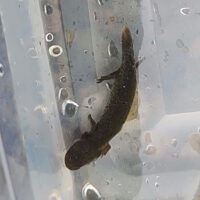 Purdue University - Extension - Forestry and Natural Resources
Purdue University - Extension - Forestry and Natural Resources
Got Nature? Blog
Illinois-Indiana Sea Grant Newsroom: The 2023 issue of Illinois-Indiana Sea Grant’s magazine, The Helm, is now available. This annual publication is a collection of program research, outreach and education success stories as well as ongoing activities to address coastal concerns. This issue is focused on stormwater management with green infrastructure, PFAS, and more, including how students are learning about water quality through hands-on opportunities.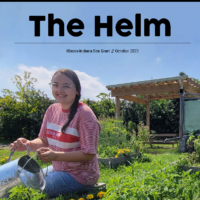
Here are some headlines from this issue:
- Green infrastructure helps communities—large and small—be ready for the future
- With a Hydrolab, Students study their own environment
- Study finds PFAS in all tested Lake Michigan sportfish and their prey
- Aquaponics offers high schoolers a hands-on way to learn science, math, and more
For full article and videos please visit New issue of IISG’s The Helm highlights green infrastructure projects – IISG
To download this new issue please visit IISG’s Publications and Products.
Resources
Aquaculture Industry in Indiana Growing, Purdue Today
Walleye Farmed Fish Fact Sheet: A Guide for Seafood Consumers, The Education Store, Purdue Extension resource center
Sustainable Aquaculture: What does it mean to you?, The Education Store
Pond and Wildlife Management website, Purdue Extension
Fish University Podcasts, NR University, Collaboration with Mississippi, Florida, Iowa and Indiana Extension Services
Fish Cleaning with Purdue Extension County Extension Director, Got Nature? Blog, Purdue Extension – Forestry and Natural Resources
Aquatics & Fisheries, Playlist, Purdue Extension – Forestry and Natural Resources
Eat Midwest Fish, Illinois-Indiana Sea Grant online resource hub
Ask An Expert: Hot and Cold, Video, Purdue Extension – Forestry and Natural Resources YouTube channel
Informing the Development of the Great Lakes Region Decision Support System, The Education Store, Purdue Extension’s resource center
Improving Water Quality Around Your Farm, The Education Store
Scientists bring the Great Lakes to students learning from home, Got Nature? Blog
Adaptations for Aquatic Amphibians Activity 2: Water Quality Sneak Peak, Purdue Nature of Teaching
Illinois-Indiana Sea Grant (IISG)
Seafood is more than just fish caught in the ocean. It includes a wide variety of product types, forms, flavors, and textures. One of the great things about using seafood is its versatility—it can be served as a main course or be used as an ingredient for appetizers, salads, and soups. Packed with important nutrients the human body needs to maintain good health, it is an excellent source of protein to include on your shopping list. Being informed about both the benefits and potential concerns with different types of seafood can help you decide which products to add to your cart or order at a restaurant.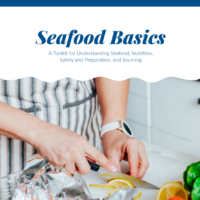
This toolkit, designed specifically for nutrition and wellness professionals and educators, will provide you with information and resources to help you talk to your clients about the complex food category known as seafood. You will learn about the basics of seafood, nutrition benefits of including seafood as part of a healthy eating pattern, concerns about safety, tips for purchasing seafood, and ideas for cooking demonstrations. We’ve included simple and tasty recipes that you can use to introduce your clients to the many flavors of fish and shellfish, links to downloadable and printable handouts, and sample social media posts that you can use to inform and inspire.
This toolkit is geared toward extension staff who teach nutrition and wellness. It includes both printable and digital elements that can be shared with clients based on interest and need.
To receive the free download and recipe visit the Purdue Extension’s resource center: The Education Store – Seafood Basics: A Toolkit for Understanding Seafood, Nutrition, Safety and Preparation, and Sourcing.
Resources:
Purdue Extension – Forestry and Natural Resources– Subscribe to the Youtube channel
Freshwater Prawn Farmed Fish Fact Sheet, The Education Store
Ask An Expert: What is Aquaculture?, Purdue Extension FNR YouTube Channel
Largemouth Bass Market Trends, Purdue Extension – Forestry and Natural Resources (FNR) YouTube Channel
Yellow Perch Farmed Fish Fact Sheet, The Education Store
Tilapia Farmed Fish Fact Sheet, The Education Store
Rainbow Trout Farmed Fish Fact Sheet, The Education Store
American Paddlefish, The Education Store
A Guide to Small-Scale Fish Processing Using Local Kitchen Facilities, The Education Store
Aquaculture Family Coloring Book Development, The Education Store
Channel Catfish, The Education Store
Eat Midwest Fish, Illinois-Indiana Sea Grant online resource hub
Amy Shambach, Aquaculture Marketing Outreach Associate
Purdue Department of Forestry and Natural Resources/Illinois Indiana Sea Grant Program
Hybrid plants and animals can occur in wild environments and are produced by artificially crossing species for the purpose of selective breeding. An example of a popular commercial application is hybrid striped bass, a striped (Morone saxatilis) and white bass (Morone chrysops) cross. Common names include palmetto and sunshine bass. Hybrid striped bass have broken stripes running the length of their bodies, and forked tails. They have two unconnected dorsal fins—one with hard spines. They often are silver above and white below. Coloration depends on environmental factors, like the color of the water. Their flesh has a mild flavor and flakey texture when cooked.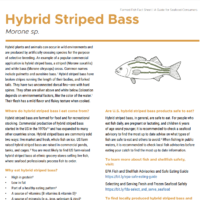
Where do hybrid striped bass I eat come from?
Hybrid striped bass are farmed for food and for recreational stocking. Commercial production of hybrid striped bass started in the US in the 1970s and has expanded to many other countries since. Hybrid striped bass are commonly sold two ways: live market and fresh, whole fish on ice. US farm raised hybrid striped bass are raised in commercial ponds, tanks, and cages. You are most likely to find US farm-raised hybrid striped bass at ethnic grocery stores selling live fish, where seafood professionals process fish to order.
To receive the free download and recipe visit the Purdue Extension’s resource center: The Education Store – Hybrid Striped Bass Farmed Fish Fact Sheet.
Resources:
Freshwater Prawn Farmed Fish Fact Sheet, The Education Store
Ask An Expert: What is Aquaculture?, Purdue Extension FNR YouTube Channel
Walleye Farmed Fish Fact Sheet, The Education Store, Purdue Extension’s resource center
Pacific White Shrimp Farmed Fact Sheet, The Education Store
Yellow Perch Farmed Fish Fact Sheet, The Education Store
Tilapia Farmed Fish Fact Sheet, The Education Store
Rainbow Trout Farmed Fish Fact Sheet, The Education Store
American Paddlefish, The Education Store
A Guide to Small-Scale Fish Processing Using Local Kitchen Facilities, The Education Store
Aquaculture Family Coloring Book Development, The Education Store
Channel Catfish, The Education Store
Eat Midwest Fish, Illinois-Indiana Sea Grant online resource hub
Amy Shambach, Aquaculture Marketing Outreach Associate
Purdue Department of Forestry and Natural Resources/Illinois Indiana Sea Grant Program
Freshwater prawn (Macrobrachium rosenbergii), also known as the giant river prawn and giant tiger prawn, is a close relative to marine shrimp. They are one of over 950 species in the Palaemonidae family. Freshwater prawn males can reach a total length of 12.6 inches (320 mm);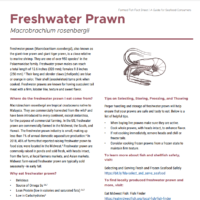 females 9.8 inches (250 mm). Their long and slender claws (chelipeds) are blue or orange in color. Their shell (exoskeleton) turns pink when cooked. Freshwater prawns are known for having succulent tail meat with a firm, lobster like, texture and sweet flavor.
females 9.8 inches (250 mm). Their long and slender claws (chelipeds) are blue or orange in color. Their shell (exoskeleton) turns pink when cooked. Freshwater prawns are known for having succulent tail meat with a firm, lobster like, texture and sweet flavor.
Where do the freshwater prawn I eat come from?
Macrobrachium rosenbergii are tropical crustaceans native to Malaysia. They are commercially harvested from the wild and have been introduced to every continent, except Antarctica, for the purpose of commercial farming. In the US, freshwater prawn are commercially farmed in the Midwest, the South, and Hawaii. The freshwater prawn industry is small, making up less than 1% of annual domestic aquaculture production. In 2018, 45% of farms that reported raising freshwater prawn to food size, were located in the Midwest. Freshwater prawn are commonly raised in ponds and sold fresh, with heads intact, from the farm, at local farmers markets, and Asian markets. Midwest farm-raised freshwater prawn are typically sold seasonally—in early fall.
To receive the free download and recipe visit the Purdue Extension’s resource center: The Education Store – Freshwater Prawn Farmed Fish Fact Sheet.
Resources:
Walleye Farmed Fish Fact Sheet, The Education Store, Purdue Extension’s resource center
Pacific White Shrimp Farmed Fact Sheet, The Education Store
Yellow Perch Farmed Fish Fact Sheet, The Education Store
Tilapia Farmed Fish Fact Sheet, The Education Store
Rainbow Trout Farmed Fish Fact Sheet, The Education Store
American Paddlefish, The Education Store
A Guide to Small-Scale Fish Processing Using Local Kitchen Facilities, The Education Store
Aquaculture Family Coloring Book Development, The Education Store
Channel Catfish, The Education Store
Eat Midwest Fish, Illinois-Indiana Sea Grant online resource hub
Amy Shambach, Aquaculture Marketing Outreach Associate
Purdue Department of Forestry and Natural Resources/Illinois Indiana Sea Grant Program
Illinois-Indiana Sea Grant (IISG) Newsroom: At the recent Great Lakes Sea Grant Network meeting in Evanston, Illinois, Amy Shambach, Illinois-Indiana Sea Grant aquaculture marketing outreach associate, was presented with the 2023 Great Lakes Sea Grant Network Early Career Award.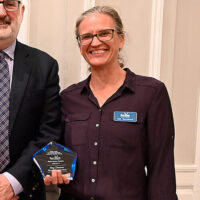
Shambach has been in her role with IISG since 2019. Since then, she has developed numerous outreach products, including videos, factsheets, and websites. She has organized and led webinars and workshops in the two states and helped lead Great Lakes-wide projects.
Throughout her four years with the program, Shambach has worked closely with fish farmers—she has been someone they can turn to for guidance and information. As a result, she was able to help some farmers successfully secure federal support during COVID and then when an ice storm hit southern Illinois.
“It is unusual for someone to launch so many high-output, high-impact programs so early in their Sea Grant career, especially when they begin the job with little outreach experience,” said Stuart Carlton, IISG assistant director. “However, Amy is not usual, she is special, and is well deserving of recognition for her work.”
To see full article, please visit: Illinois-Indiana Sea Grant recognized for outstanding outreach efforts.
Amy provides outreach and extension services to producers, potential producers, and consumers, which is also shared through IISG partner Purdue Extension.
To view Amy’s publications and products, please visit Illinois-Indiana Sea Grant’s Resources Page.
For free downloads of the publications, view The Education Store, Purdue Extension’s resource center, and place “Amy Shambach” in the search field.
Resources:
Freshwater Prawn Farmed Fish Fact Sheet, The Education Store, Purdue Extension’s resource center
Largemouth Bass Farmed Fish Fact Sheet, The Education Store
Atlantic Salmon Farmed Fish Fact Sheet, The Education Store
A Guide to Small-Scale Fish Processing Using Local Kitchen Facilities, The Education Store
Walleye Farmed Fish Fact Sheet: A Guide for Seafood Consumers, The Education Store
Sustainable Aquaculture: What does it mean to you?, The Education Store
Center For Great Lakes Literacy (CGLL), Website
Scientists bring the Great Lakes to students learning from home, Got Nature? Blog
Aquaculture Industry in Indiana Growing, Purdue Today
Largemouth Bass Market Trends, Purdue Extension – Forestry and Natural Resources (FNR) YouTube Channel
Ask An Expert: Hot and Cold, Video, Purdue Extension – FNR YouTube Channel
Video: Cage Culture and Aquaponics, FNR Youtube Channel
Eat Midwest Fish, Illinois-Indiana Sea Grant online resource hub
Illinois-Indiana Sea Grant (IISG)
This one-day workshop will focus on aquaponics in the classroom. Topics that will be covered include fish culture basics, plant culture, water quality, systems, and more. 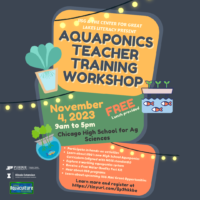
Workshop Participants will:
- Participate in hands-on activities.
- Learn about IISG’s NEW aquaponics curriculum.
- Tour the High School for Ag Sciences aquaponics space.
- Become eligible for a new IISG loan program.
- Hear about IISG programs.
- Be inspired to incorporate aquaponics in the classroom.
Date: Saturday, November 4, 2023
Time: 9 AM – 5 PM Central (CST)
Location: Chicago High School for Agricultural Sciences, 3857 West 111th Street, Chicago, IL, 60655
Program partners include Illinois-Indiana Sea Grant, the Center for Great Lakes Literacy, the Indiana Aquaculture Association, University of Illinois Extension, and Purdue University’s Department of Forestry and Natural Resources.
To learn more about this event and how to register please visit Purdue Extension – Forestry & Natural Resources (FNR) Events.
What is Aquaponics: Fish and Plants Grow Sustainabley Through Aquaponics, IISG Newsroom
About IISG: These are trying times for the environment. Climate change and other concerns such as population growth, aquatic invasive species, contaminated waters, and loss of natural habitat, the southern Lake Michigan region faces many challenges. Illinois-Indiana Sea Grant (IISG), with its unique mandate to bring the latest science to those who can best use the information, serves a critical role in empowering people to solve problems in sustainable ways. The program is funded through National Oceanic and Atmospheric Administration (NOAA), the University of Illinois and Purdue University, but IISG also works in partnerships with key organizations, institutions, and agencies in the region to reach more audiences and multiply opportunities for success. IISG brings together scientists, educators, policy makers, community decision makers, outreach specialists, business leaders, and the general public to work towards a healthy environment and economy.
Resources:
Walleye Farmed Fish Fact Sheet, The Education Store, Purdue Extension’s resource center
Freshwater Prawn Farmed Fish Fact Sheet, The Education Store
Adaptations for Aquatic Amphibians, The Nature of Teaching, Purdue Extension – Forestry and Natural Resources (FNR)
Purdue Extension
Sustainable Aquaculture: What does it mean to you?, The Education Store
A Guide to Small-Scale Fish Processing Using Local Kitchen Facilities, The Education Store
Aquaculture Industry in Indiana Growing, Purdue Today
Purdue Aquaponics: Cut Water Usage, Purdue University YouTube Channel
Largemouth Bass Market Trends, Purdue Extension – FNR YouTube Channel
Amy Shambach, Aquaculture Marketing Outreach Associate
Purdue Department of Forestry and Natural Resources/Illinois-Indiana Sea Grant Program
Andrew Coursey, Aquaculture Specialist
Illinois-Indiana Sea Grant Program
Illinois-Indiana Sea Grant Newsroom: A group of Midwestern shrimp farmers are on a mission to provide Americans with better-tasting, sustainable shrimp. The industry struggled during the COVID-19 pandemic, but farmers remain hopeful that indoor shrimp farming will come back stronger than ever.

Jeff Howell shows off a trio of shrimp at Triple J Farms in Foristell, Missouri. The farm specializes in Pacific Whiteleg shrimp.
Experts say aquaculture, a method used to produce aquatic organisms in controlled conditions, can be a new market for farmers.
Though commercial shrimp farms came to the United States in the 1960s, about 90% of the shrimp Americans eat is still imported, said Amy Shambach, aquaculture marketing outreach associate for Illinois-Indiana Sea Grant.
As consumers start to prioritize sustainability and freshness when shopping for seafood, Shambach said inland shrimp farming can fill the need.
For full article and videos please visit Amy Shambach talks about the future of shrimp farming – IISG
About IISG: These are trying times for the environment. Climate change and other concerns such as population growth, aquatic invasive species, contaminated waters, and loss of natural habitat, the southern Lake Michigan region faces many challenges. Illinois-Indiana Sea Grant (IISG), with its unique mandate to bring the latest science to those who can best use the information, serves a critical role in empowering people to solve problems in sustainable ways. The program is funded through National Oceanic and Atmospheric Administration (NOAA), the University of Illinois and Purdue University, but IISG also works in partnerships with key organizations, institutions, and agencies in the region to reach more audiences and multiply opportunities for success. IISG brings together scientists, educators, policy makers, community decision makers, outreach specialists, business leaders, and the general public to work towards a healthy environment and economy.
Resources
Aquaculture Industry in Indiana Growing, Purdue Today
Farming Shrimp, and Changing the Industry, Far From an Ocean, article available by news service Aljazeera America
Video: Cage Culture and Aquaponics, FNR Youtube channel
Walleye Farmed Fish Fact Sheet: A Guide for Seafood Consumers, The Education Store, Purdue Extension resource center
Sustainable Aquaculture: What does it mean to you?, The Education Store
Fish: Healthy Protein Handout, The Education Store
The Benefits of Seafood Consumption The Education Store
Eat Midwest Fish, Illinois-Indiana Sea Grant online resource hub
Illinois-Indiana Sea Grant (IISG)
MyDNR, Indiana’s Outdoor Newsletter: The Indiana Cooperative Fish and Wildlife Research Unit, or CRU, that Purdue will host, brings together the U.S. Geological Survey, U.S. Fish and Wildlife Service, Purdue University, the DNR, and the Wildlife Management Institute.
Its focus will be on delivering actionable science addressing fish, wildlife, plants, and other natural resources in Indiana and beyond, including the connection between the health of wildlife and the health of people.
The CRU Program is results focused, bringing together natural resource managers and researchers to work as a team to address the most pressing natural resource management needs with science. As such, the partnerships formalized with the creation of CRUs lead to true co-production of research.
“The creation of this new unit is another milestone in the highly successful USGS Cooperative Research Units Program, and we are proud to join the state of Indiana, Purdue University, the USGS, Wildlife Management Institute, and others to address conservation questions facing Indiana and the region,” said U.S. Fish and Wildlife Service Science Applications Program Assistant Regional Director Craig Czarnecki. “We look forward to engaging with the students and professionals at Purdue University as we co-develop scientific research and support the next generation of conservationists.”
But CRUs don’t just tackle management needs. They do so while cultivating the next generation of scientists and resource managers. The new Indiana CRU will focus on education, training, and outreach related to natural resources vital not only to Indiana, but the Midwest and regional economies as well.
Like all CRUs, the Indiana CRU will consist of 2-5 federal scientists along with graduate students, postdoctoral fellows, and administrative specialists. Federal scientists will serve as faculty at Purdue University, teaching graduate-level courses, supervising graduate students and postdocs, offering workshops for students and cooperators, and conducting research on natural resources topics. Once created, each CRU formalizes research priorities, like aquatic conservation or wildlife disease. Indiana CRU partners will decide these in the coming months.
“We look forward to the tremendous opportunity that collaboration with the Indiana CRU will bring to our state and Purdue University,” said Karen Plaut, executive vice president of research at Purdue University. “It will have a direct impact on graduate education as well as research productivity and innovation.”
For full article please visit: The partnership is Indiana’s first U.S. Geological Survey Cooperative Fish and Wildlife Research Unit, Indiana DNR Calendar.
Sign up to receive the MyDNR Newsletter by email: MyDNR Email Newsletter
Resources:
Purdue Announces New USGS Cooperative Research Unit, Purdue Agriculture New
Wildlife Habitat Education Program: Wildlife Identification Guide, The Education Store, Purdue Extension resource center
Wildlife Habitat Education Program – Teaching and Learning Wildlife Management Practices, The Education Store
Wildlife Habitat Evaluation Program: Preparing for the Wildlife Challenge, The Education Store
Developing a Wildlife Habitat Management Plan, The Education Store
Woodland Wildlife Management, The Education Store
Purdue Integrated Deer Mangement Project, Purdue College of Agriculture
Purdue Extension-Forestry and Natural Resources (FNR) Publications
Indiana Pond Fish, Species Identification Card Set, Purdue Extension – Forestry and Natural Resources (FNR)
A Guide to Small-Scale Fish Processing Using Local Kitchen Facilities, The Education Store
Subscribe to Purdue Extension-FNR YouTube Channel
Invasive Species, Playlist, Purdue Extension – FNR YouTube Channel
What are invasive species and why should I care?, Got Nature? Blog, Purdue Extension – Forestry and Natural Resources
Invasive plants: Impact on Environment and People, The Education Store, Purdue Extension’s resource center
Indiana Department of Natural Resources, Department of Fish & Wildlife
Biologists with the Indiana Department of Natural Resources (DNR) and Purdue University recently documented a very young hellbender salamander, a gilled larva, in the Blue River while conducting routine surveys in south-central Indiana. This discovery is significant because over the past three to four decades, only adult hellbenders have been documented in the Blue River. The presence of a young salamander suggests that conservation efforts and rearing programs are accomplishing their goals for the recovery of this endangered species.
The hellbender (Cryptobranchus alleganiensis) is a large, fully aquatic salamander. Hellbenders do not reach sexual maturity until they are 7-8 years old and require specific habitats to thrive and reproduce. Their decline statewide has been documented as far back as the early-to-mid 1900s as a result of habitat loss and poor water quality. Hellbenders play an important role in aquatic ecosystems and are indicators of clean water.
“Finding hellbender larvae is a huge benchmark of the program’s success,” said DNR’s Nate Engbrecht, the state herpetologist. “It tells us that there has been successful breeding, hatching, and recruitment in the wild. It’s a wonderful sign that captive-reared and released hellbenders are doing what we want them to do at this site.”
The hellbender found by Engbrecht and Purdue hellbender program coordinator Nick Burgmeier was a gilled larva measuring 6.5 centimeters in total length with a 5 centimeter snout-vent length. Based on its size, this animal is estimated to be eight months old.
While hellbender larvae may have been found by fisherman while seining over the years, none have been officially reported to the state herpetologist or to fisheries biologists of the Indiana DNR. The last documented juvenile was reported by William H. Kern Jr. in 1983.
In the event anglers accidentally hook a hellbender, they are reminded to cut the line, let the salamander go unharmed and report the sighting to a natural resource professional.
The importance of the larval sighting is that it shows that the Help the Hellbender partnership’s conservation efforts, breeding and rearing programs are trending in a positive direction.
“Our early research on the lack of reproduction and recruitment indicated it was most likely the result of low population numbers,” said Dr. Rod Williams, director of the Help the Hellbender lab at Purdue. “For the past 12 years, Purdue and zoo partners have worked tirelessly to rear and release animals back into the wild, increase population sizes, and ultimately the chance for natural breeding. This finding, the result of nearly two decades of collective effort, signifies a milestone for our conservation program. While we have much left to do, we have evidence our approach is working.”
The Indiana Hellbender Partnership is a collaboration between the Indiana DNR and Purdue University with funding support from the Indiana DNR Nongame Wildlife Fund, U.S. Fish & Wildlife Service, and partners in local governments, universities, non-governmental organizations, and zoos that are working to recover the state-endangered hellbender. Developed over 15 years, the Indiana Hellbender Partnership is the largest and most comprehensive group working to recover an imperiled amphibian in Indiana.
For full article please visit 2023 FNR News and Stories: Researchers Discover Young Hellbender in Blue River.
Resources:
Help the Hellbender website
Help the Hellbender Facebook page
Ask the Expert: Learn All About Hellbenders and Take a Tour, Subscribe Purdue Extension – Forestry & Natural Resources (FNR) YouTube Channel
Ask the Expert video: Help the Hellbender – Dr. Stephen Spear of The Wilds, Purdue Extension – FNR YouTube Channel
Ask the Expert video: Live with Mesker Park Zoo and Botanical Gardens – Hellbenders, Purdue Extension – FNR YouTube Channel
A Moment in the Wild video: Hellbender Hide, Purdue Extension – FNR YouTube Channel
A Moment in the Wild video: Release Moment of Hellbenders,
How Anglers and Paddlers Can Help the Hellbender video, Purdue Extension – FNR YouTube Channel
Eastern Hellbender ID Video, Purdue Extension – FNR YouTube Channel
Hellbenders Rock!, The Education Store, Purdue Extension’s resource center
Help the Hellbender, North America’s Giant Salamander, The Education Store
How Our Zoos Help Hellbenders, The Education Store
The Nature of Teaching: Adaptations for Aquatic Amphibians, The Education Store
Healthy Water, Happy Home – Lesson Plan, The Education Store
Purdue Expert: Hellbender Salamander, Purdue University News YouTube Channel
FNR Assists in First Natural Breeding of Eastern Hellbender in Captivity, Purdue FNR News & Stories
Helping the Hellbender: Mesker Park Zoo Begins Captive Breeding Efforts, Purdue Agriculture News
Indiana Department of Natural Resources (IN DNR)
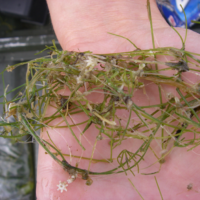 MyDNR, Indiana’s Outdoor Newsletter: Did you know that Indiana’s waterways can be altered by the presence of aquatic invasive species? Non-native plants, animals, and organisms can disrupt bodies of water and ecosystems, threatening sport fisheries and other commercial resources.
MyDNR, Indiana’s Outdoor Newsletter: Did you know that Indiana’s waterways can be altered by the presence of aquatic invasive species? Non-native plants, animals, and organisms can disrupt bodies of water and ecosystems, threatening sport fisheries and other commercial resources.
If you’re wondering what you can do to help prevent the spread of aquatic invasive species, there are many easy steps that Hoosiers and out-of-state visitors can take to stop aquatic hitchhikers:
- Clean off any animals, plants, and mud from any angling or boating gear.
- Drain the water from watercrafts, bladder tanks, bilges, motors, livewells, and portable bait containers before leaving the water access area.
- Make sure everything air-dries for five days or longer or is dried with a towel.
- Dispose of any unwanted or unused bait, fish parts, and packing materials in the trash, rather than on the ground or in water. Remember, littering harms the environment.
DNR is counting on you to help protect Indiana’s waterways and species.
Newsletter can be found online: MyDNR Email Newsletter
For more information please visit DNR: Fish & Wildlife: Aquatic Invasive Species (AIS).
Resources:
Invasive Mussels, IN DNR Fish and Wildlife
Aquatic Invasive Species in the Great Lakes: The Quagga Mussel, Purdue Extension – Forestry & Natural Resources (FNR) Got Nature? Blog
Aquatic Invaders in the Marketplace, Illinois-Indiana Sea Grant (IISG)
Invasive Species, Playlist, Purdue Extension – FNR YouTube Channel
What are invasive species and why should I care?, Got Nature? Blog, Purdue Extension – Forestry and Natural Resources
Report Invasive Species, Purdue Invasive Species
The GLEDN Phone App – Great Lakes Early Detection Network
EDDMaps – Early Detection and Distribution Mapping System
Indiana Department of Natural Resources: Invasive Species
Indiana Invasive Species Council
Cooperative Invasive Species Management Area (CISMA)
Great Lakes Sea Grant Network (GLERL), NOAA – Great Lakes Environmental Research Laboratory
A Field Guide to Fish Invaders of the Great Lake Regions, Illinois-Indiana Sea Grant (IISG)
Purdue Researchers Get to the Bottom of Another Quagga Mussel Impact, Illinois-Indiana Sea Grant (IISG)
Invasive plants: Impact on Environment and People, The Education Store, Purdue Extension’s resource center
Protect Your Waters, U.S. Fish and Wildlife Service & U.S. Coast Guard
Nongame and Endangered Wildlife, Indiana Department of Natural Resources
Indiana Department of Natural Resources, Department of Fish & Wildlife
Recent Posts
- 2024-25 Fishing Guide now available – Wild Bulletin
Posted: April 4, 2024 in Alert, Aquaculture/Fish, Aquatic/Aquaculture Resources, How To, Ponds, Wildlife - Look Out for Invasive Carp in Your Bait Bucket – Wild Bulletin
Posted: March 31, 2024 in Alert, Aquaculture/Fish, Aquatic/Aquaculture Resources, Invasive Animal Species, Wildlife - Renew Your Indiana Annual Fishing, Hunting, and Trapping License, MyDNR
Posted: March 28, 2024 in Aquaculture/Fish, Aquatic/Aquaculture Resources, How To, Wildlife - Kwamena Quagrainie Receives Fulbright Specialist Award to Ghana – IISG
Posted: March 27, 2024 in Aquaculture/Fish, Aquatic/Aquaculture Resources, Community Development - Report Your Mudpuppy Observations to Indiana DNR – Wild Bulletin
Posted: February 1, 2024 in Alert, Aquaculture/Fish, Aquatic/Aquaculture Resources, How To, Wildlife - Help the Hellbender Team Honored as Friends of Conservation
Posted: January 28, 2024 in Aquaculture/Fish, Aquatic/Aquaculture Resources, Wildlife - New Indiana DNR Webinar, Conservation of the Hellbender: Experts Unite
Posted: January 24, 2024 in Aquaculture/Fish, Aquatic/Aquaculture Resources, Webinar, Wildlife - Publication- Bluegill Farmed Fish Fact Sheet
Posted: December 15, 2023 in Aquaculture/Fish, Aquatic/Aquaculture Resources, Publication, Wildlife - Wildlife Wins of 2023, Wild Bulletin
Posted: December 8, 2023 in Aquaculture/Fish, Aquatic/Aquaculture Resources, How To, Safety, Wildlife - Invasive Carp Removal on the Ohio River, Wild Bulletin
Posted: in Alert, Aquaculture/Fish, Aquatic/Aquaculture Resources, Invasive Animal Species, Wildlife
Archives
Categories
- Alert
- Aquaculture/Fish
- Aquatic/Aquaculture Resources
- Ask the Expert
- Christmas Trees
- Community Development
- Disease
- Drought
- Forestry
- Forests and Street Trees
- Gardening
- Got Nature for Kids
- Great Lakes
- How To
- Invasive Animal Species
- Invasive Insects
- Invasive Plant Species
- Land Use
- Natural Resource Planning
- Nature of Teaching
- Plants
- Podcasts
- Ponds
- Publication
- Safety
- Timber Marketing
- Uncategorized
- Urban Forestry
- Webinar
- Wildlife
- Wood Products/Manufacturing
- Woodland Management Moment
- Woodlands
